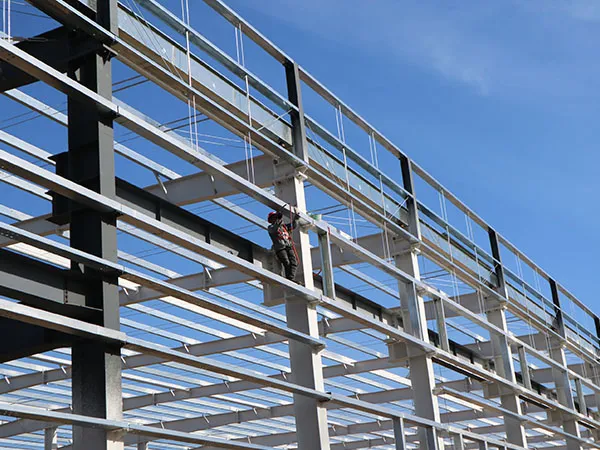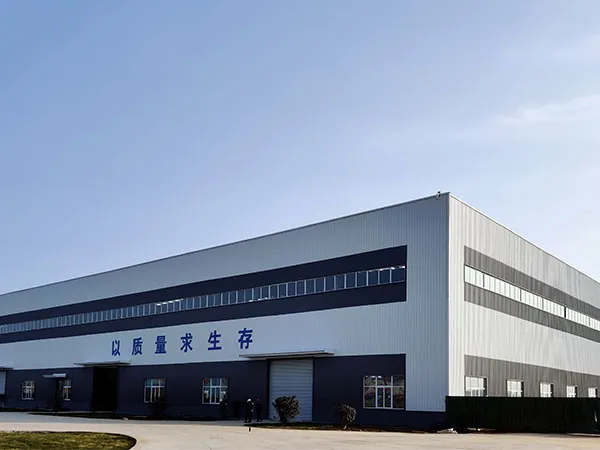Time:2025-06-21 06:30:39 Source:Sanjian Meichen Steel Structure
Industrial steel structures, while inherently non-combustible, are susceptible to significant strength loss and deformation when exposed to the high temperatures generated during a fire. This can lead to structural collapse, posing a severe risk to life and property. Therefore, fire resistance is a critical consideration in the design and construction of industrial steel structures.

Loss of Strength and Stiffness: Steel's yield strength and modulus of elasticity significantly decrease as temperature rises. While steel doesn't melt until around 1300°C, it can lose about half its strength at 650°C, and structural integrity can be compromised as low as 400°C.
Thermal Expansion and Deformation: Steel expands when heated. If restrained, this expansion can induce stresses, leading to buckling, twisting, or warping of members.
Connection Damage: High temperatures can weaken or destroy bolts, welds, and other connections, further compromising the overall stability of the structure.
Microstructural Changes: Prolonged exposure to very high temperatures (above 700-800°C) followed by rapid cooling (e.g., from firefighting water) can lead to permanent changes in the steel's microstructure, such as the formation of brittle martensite, even if visible deformation is minimal.
Building codes and regulations specify the required fire resistance ratings for different building types and elements, often expressed in minutes (e.g., 30, 60, 90, 120, 180, 240 minutes). This rating indicates the time a structure must withstand a standard fire test without collapsing, allowing for occupant evacuation and firefighting efforts.
Factors influencing the required fire resistance include the building's purpose, height, area, occupancy, and the type and quantity of combustible materials present.
The "critical temperature" of a steel member is the temperature at which its load-carrying capacity is no longer sufficient to support the applied loads. This temperature varies depending on the steel's properties, the applied load, and the section factor (ratio of exposed perimeter to cross-sectional area).
To achieve the necessary fire resistance, various passive fire protection (PFP) methods are employed:
Intumescent Coatings: These paint-like coatings expand significantly when exposed to heat, forming a thick, insulating char layer that delays heat transfer to the steel. They are popular for their aesthetic appeal and relatively thin application.
Types include water-based, solvent-based, and epoxy-based, each with specific properties regarding finish, application conditions, and durability.
Fire Protective Boards: Rigid boards made from materials like calcium silicate or mineral wool are mechanically fixed to the steel members, providing robust insulation. They offer consistent protection regardless of humidity and are resistant to impact.
Sprayed Fire-Resistive Materials (SFRM): These cementitious or mineral fiber-based sprays are applied directly to the steel, creating a thick, durable barrier that slows heat transfer. They are generally cost-effective and widely used.
Concrete Encasement: Encasing steel members in concrete provides excellent fire resistance by physically shielding the steel from direct flame exposure. While highly effective and increasing structural robustness, it adds significant weight and can be labor-intensive.
Flexible Blanket Systems: These are specialized blankets designed for specific applications, offering a reliable buffer against heat.
Water-Filled Members (Water Jackets): In some high-risk or critical applications, hollow steel sections can be filled with circulating water, which absorbs and dissipates heat, keeping the steel below critical temperatures. This method is more complex and maintenance-intensive.

Various national and international building codes and standards govern fire resistance for steel structures. Examples include ISO 834 (for fire testing), EN 13381 (for determining fire resistance of structural elements), and country-specific building codes (e.g., SCDF Fire Code in Singapore).
These standards dictate test procedures, performance criteria, and classifications for fire-resistant materials and systems.
Regular inspections and maintenance of fire protection systems are crucial to ensure their continued effectiveness, as coatings can peel and boards can crack over time.
In summary, while steel is a robust construction material, its behavior under fire conditions necessitates specific fire protection measures to ensure the safety and integrity of industrial structures. The choice of fire protection method depends on factors such as the required fire rating, aesthetic considerations, environmental conditions, and cost.